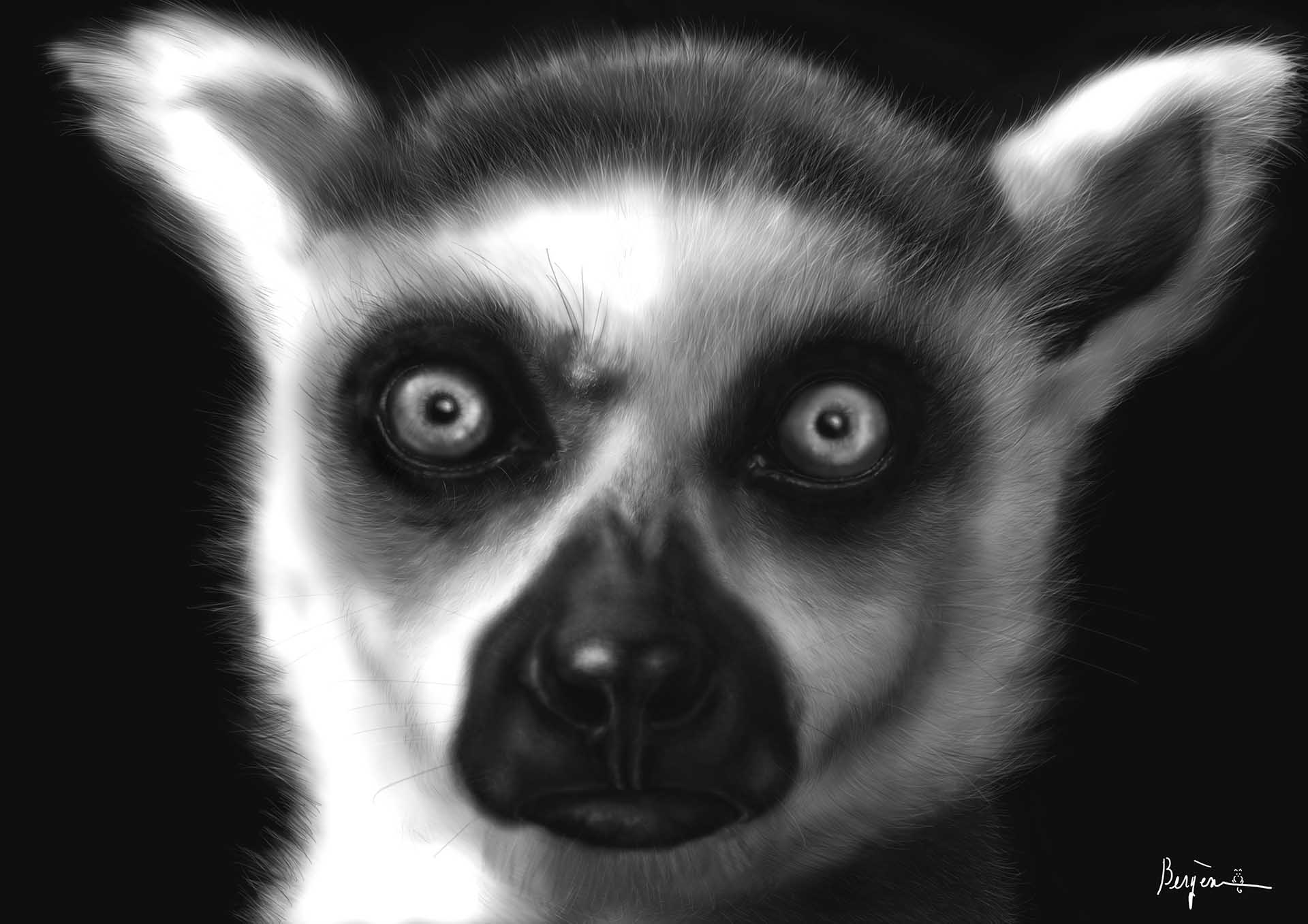
The maki catta: On the alert
Nathalie Bergese, 2015
Graphic tablet, digital
Image © 2015, courtesy of the artist
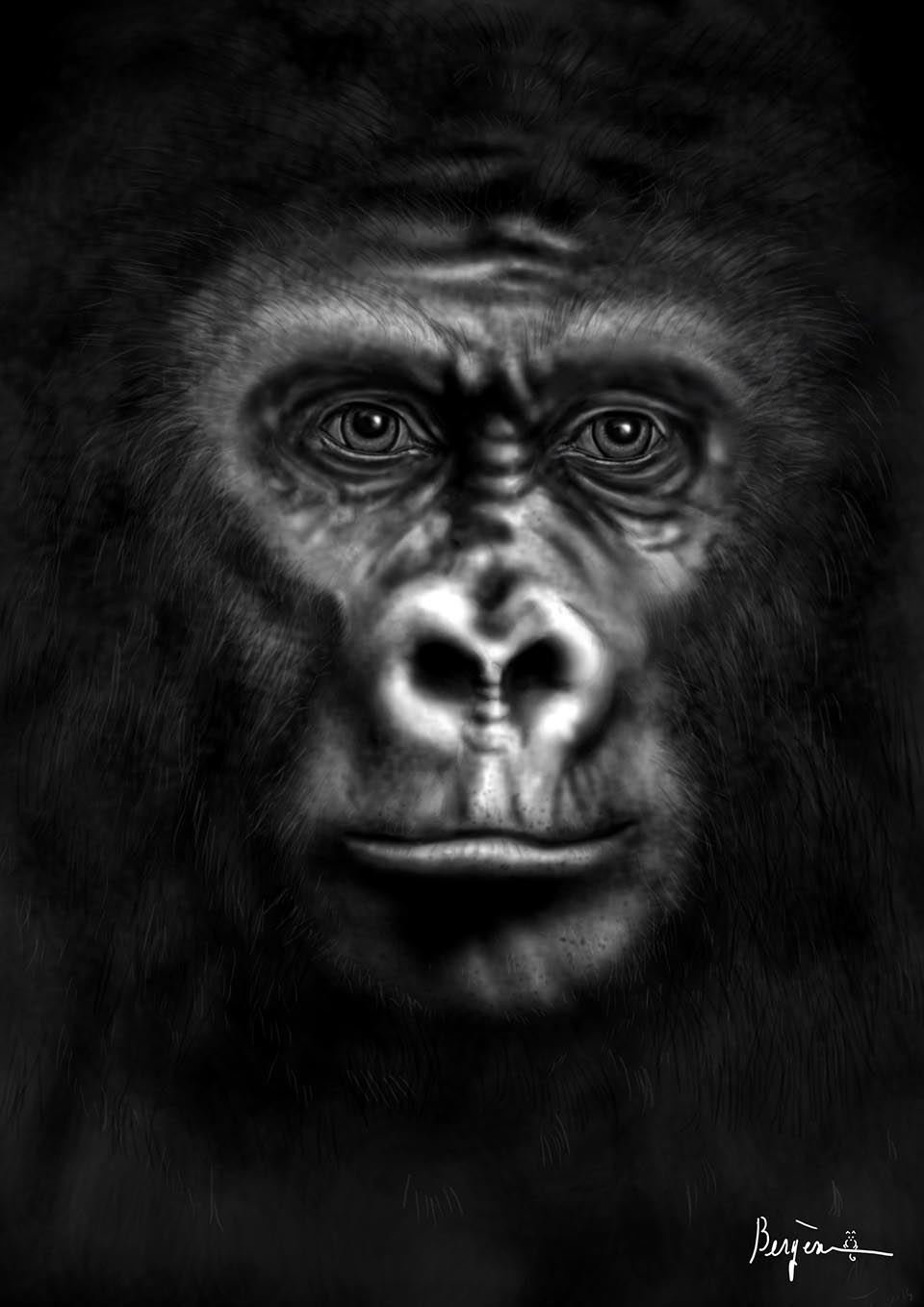
The gorilla: Deep in the eye
Nathalie Bergese, 2013
Graphic tablet, digital
Image © 2015, courtesy of the artist
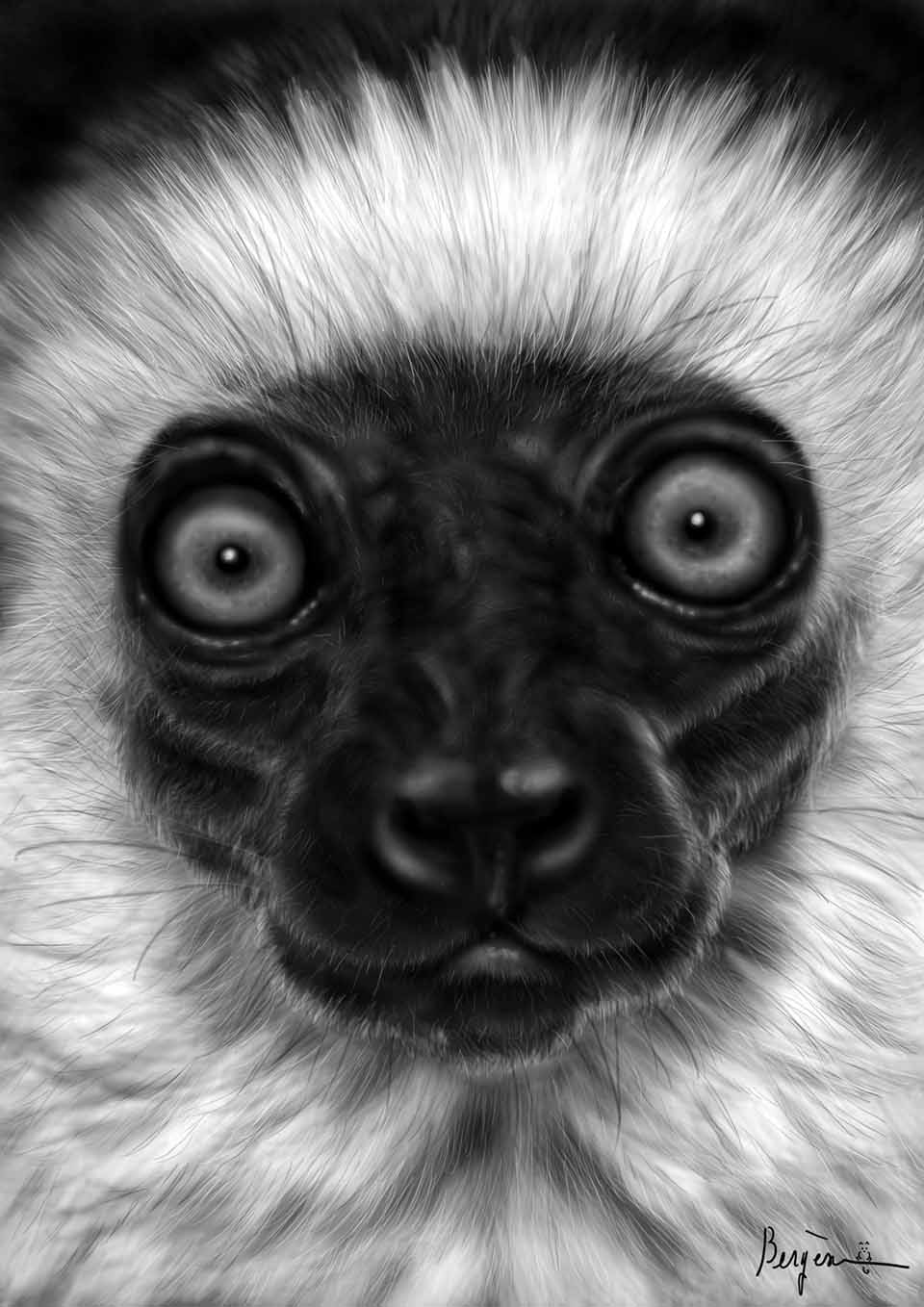
The sifaka: Wide open
Nathalie Bergese, 2014
Graphic tablet, digital
Image © 2015, courtesy of the artist
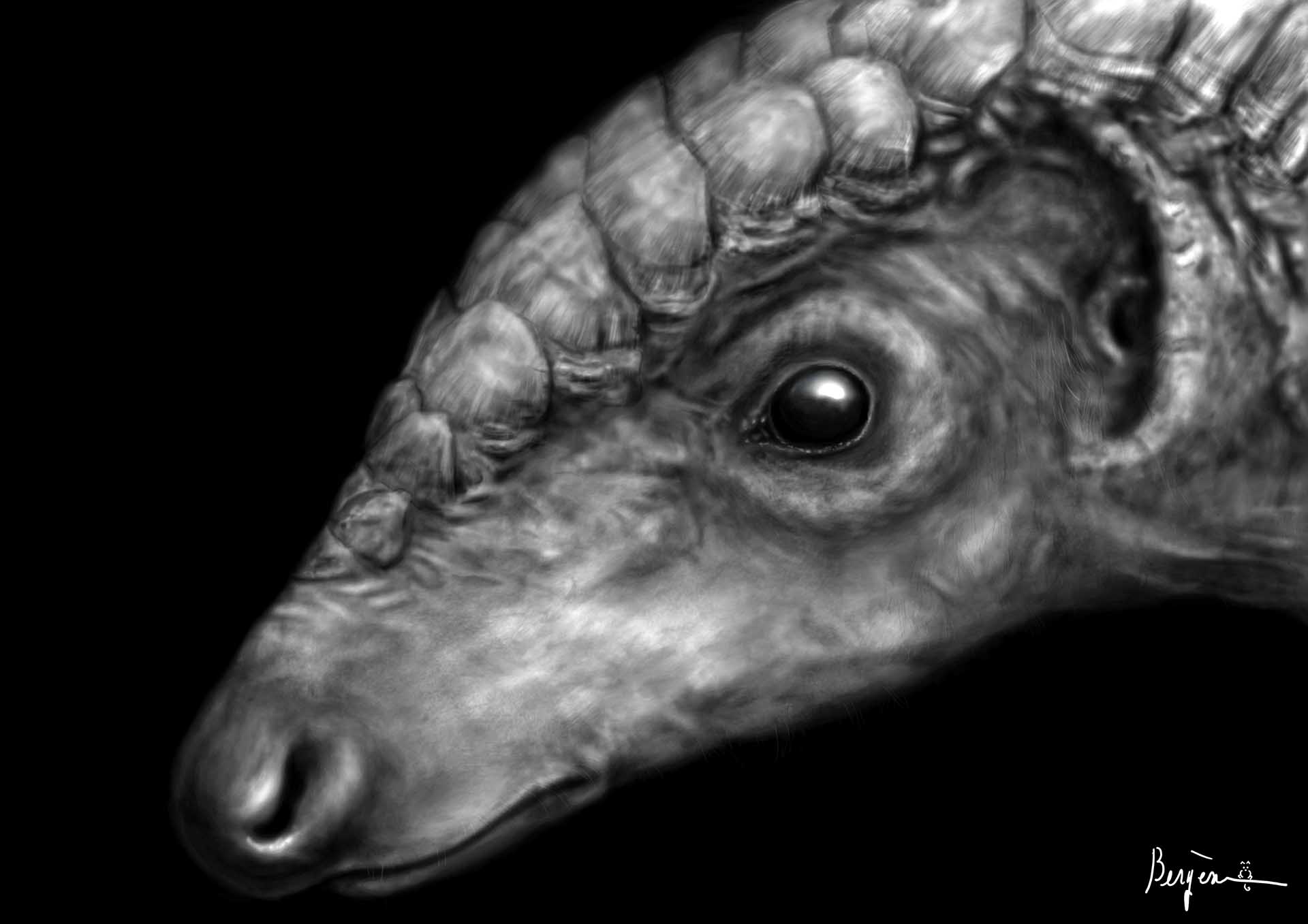
The pangolin: Because of my scales
Nathalie Bergese, 2014
Graphic tablet, digital
Image © 2015, courtesy of the artist
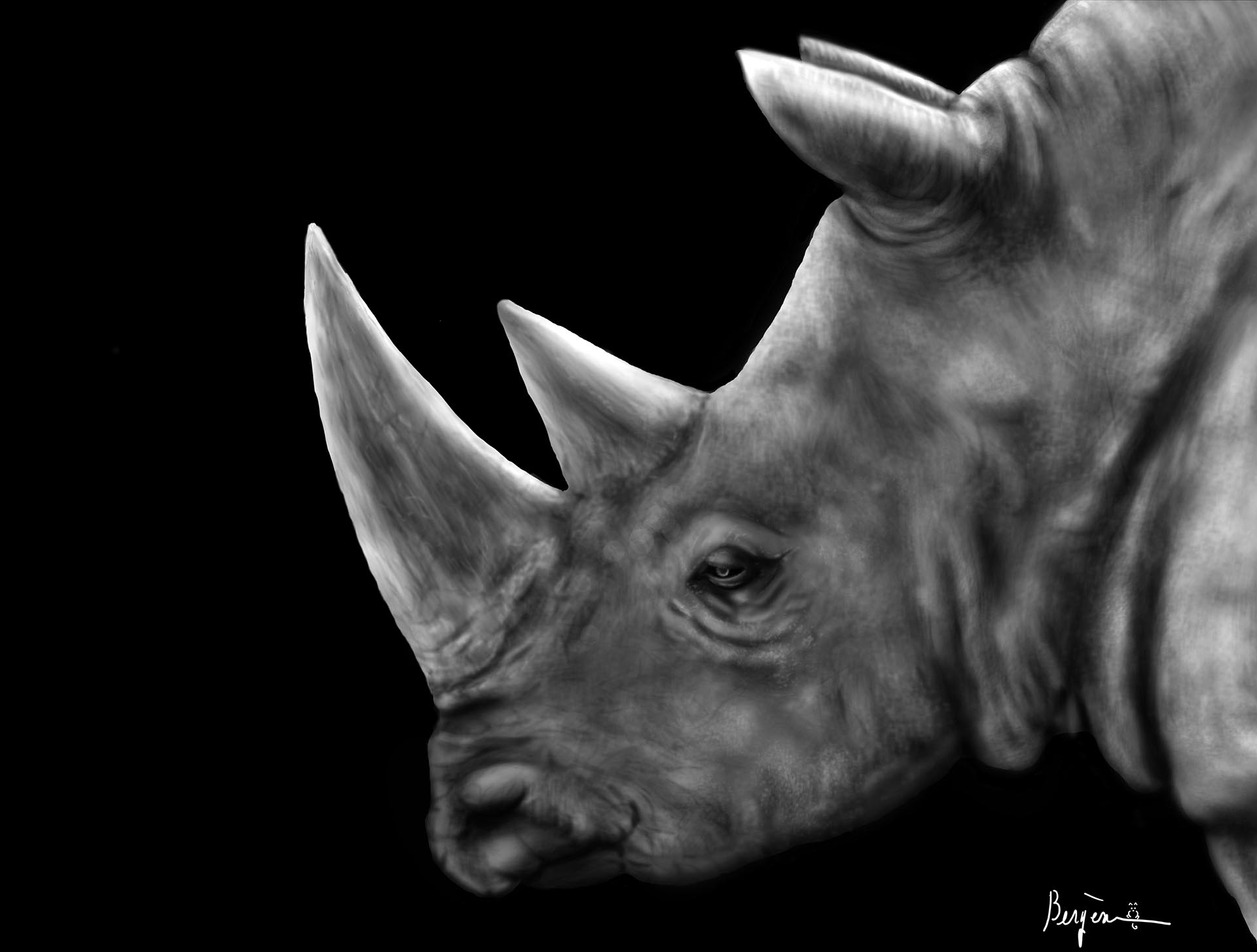
The rhinoceros: The last horn
Nathalie Bergese, 2014
Graphic tablet, digital
Image © 2015, courtesy of the artist
About the Artist
Nathalie Bergese is a digital artist whose emotive portraits of endangered species bring us face to face with the victims of our excesses. She renders close up views with a shallow depth of field to draw us into the eyes of threatened primates. She depicts sentient beings much like ourselves, whose pain we have amplified by transforming forests into a tsunami of construction supplies and paper products. She shows us the solemn profile of the pangolin and rhinoceros, two species that have been poached to the brink of extinction for reasons that defy logic. Bergese asks us to contemplate the permanence of extinction and the reality that the survival of these species rests solely in our hands.
Explore These Artworks
In the words of the artist:
“Every day, the list of threatened species grows longer: mammals, birds, amphibians, invertebrates, reptiles, fish, as well as plants and trees. The scale is such that some biologists say we are living through the sixth “mass extinction event” in the Earth’s history…. and the first one caused by humans as opposed to a large-scale natural disaster. Oscillating between despair, anger and hope, I endeavor to make a difference through my art. I draw these endangered species with affection, spend hours breathing life into them with my fingertips and draw closer to them in this creative intimacy, allowing me to dream that there is still time to save them.”
From Global Footprint Network:
WWF and the Zoological Society of London’s Living Planet Index show how rapidly average population sizes of wild species have declined. Rhino populations are particularly exposed. Without reducing human demand, it is hard to imagine how there can be sufficient space to maintain healthy populations of wild species. In essence, the greater the gap between human demand and nature’s regenerative capacity, the more pressure there will be on the resources other species need to survive, and the more perilously biodiversity will be under threat.
From World Wildlife Fund:
The illegal wildlife trade is wiping out populations in unprecedented numbers of rhinos, tigers, elephants – and yes, even pangolins, around the world.
In the past few years, an estimated 30,000 elephants in Africa were slaughtered annually for ivory. Poaching is pillaging wild tiger populations to historic lows with as few as 3,200 remaining in the wild.
Poaching of African rhinos has also skyrocketed – 1,215 were killed in South Africa in 2014 alone, compared to 13 in 2007, resulting in a 9,000% increase over those seven years. Although international trade in rhino horn has been banned under CITES, demand remains high and fuels rhino poaching in both Africa and Asia. There’s a belief coming from Asian countries that rhino horn will cure cancer or hangovers, when it reality it’s made of nothing more than the substance of our human fingernails.
Sadly, pangolins are one of the most trafficked mammals in the world due to demand for their meat and scales. Based on reported seizures between 2011 and 2013, upwards of 240,000 pangolins were killed, which represents only the tip of the trade.
WWF works to stop the poaching, stop the trafficking and stop the demand for illegal wildlife parts and products.
Join with WWF to stop this massacre and pledge not to buy illegal wildlife products. Learn more here.
Reserved for art-interpretive content.
Featured Actions:
* Adopt a wildlife species through World Wildlife Fund.
* Avoid products made from protected plants or animals.
* Your pledge will be counted in Earth Day Network’s “A Billion Acts of Green” campaign. Learn more about this campaignhere.
View this video on the illegal trade in ivory, created by Director Kathryn Bigelow, Writer Scott Z. Burns and Annapurna Pictures and in collaboration with WildAid. What can you do to stop this and other wildlife crimes?











